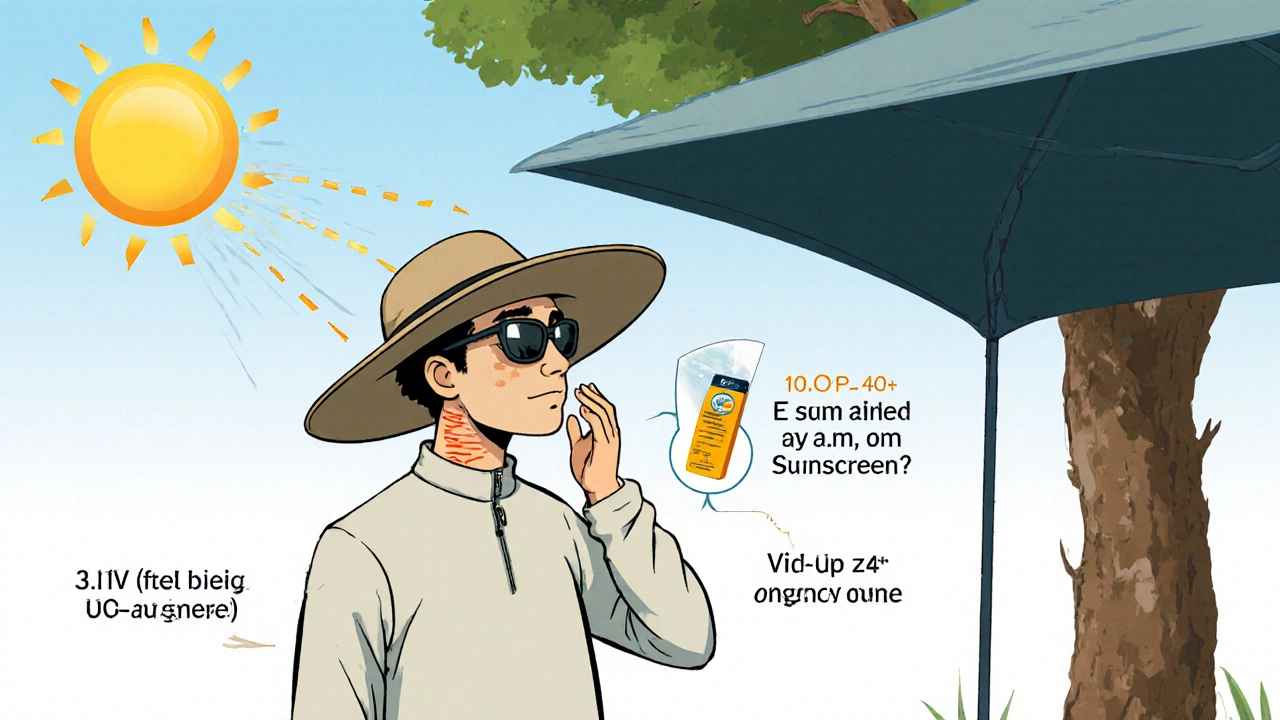When you take a photosensitizing medication, a drug that increases your skin’s sensitivity to ultraviolet light. Also known as phototoxic drugs, these can turn a normal day outside into a painful burn—even through light clothing or window glass. It’s not just about getting a sunburn. These drugs change how your skin reacts to sunlight, sometimes causing blisters, rashes, or long-term discoloration. You might not feel it until hours later, and the damage can build up over time.
This isn’t rare. Common antibiotics, like tetracyclines and fluoroquinolones are big culprits. So are diuretics, such as hydrochlorothiazide, and even some NSAIDs, including ibuprofen and naproxen. If you’re on any of these, your skin isn’t just more sensitive—it’s vulnerable. A walk to the mailbox, driving with the window down, or sitting near a sunny window can trigger a reaction. People often blame the sun, but the real trigger is the medicine they’re taking.
It’s not just about avoiding the beach. UV light comes through clouds, windows, and even some types of lighting. You need to be careful even on cloudy days or when you’re indoors near bright windows. The reaction isn’t always immediate—it can show up hours or even a day later. That’s why many people don’t connect their rash to their meds. If you notice redness, itching, or blistering after sun exposure while on a new drug, check the label or ask your pharmacist. Some meds list this risk right on the bottle.
What you can do? Wear broad-spectrum sunscreen every day, even if you’re not planning to be outside. Cover up with hats and long sleeves. Stay in the shade between 10 a.m. and 4 p.m. And if you’re starting a new prescription, ask: Can this make me more sensitive to the sun? It’s a simple question that could save you from a painful, avoidable reaction. The posts below dive into real cases, drug lists, and safety tips—so you know exactly which meds to watch for and how to protect yourself without giving up your daily routine.

Learn how to prevent painful photosensitivity reactions with proven sun protection strategies, including SPF 50+ sunscreen, UPF clothing, window film, and avoiding common triggers like medications and skincare products.